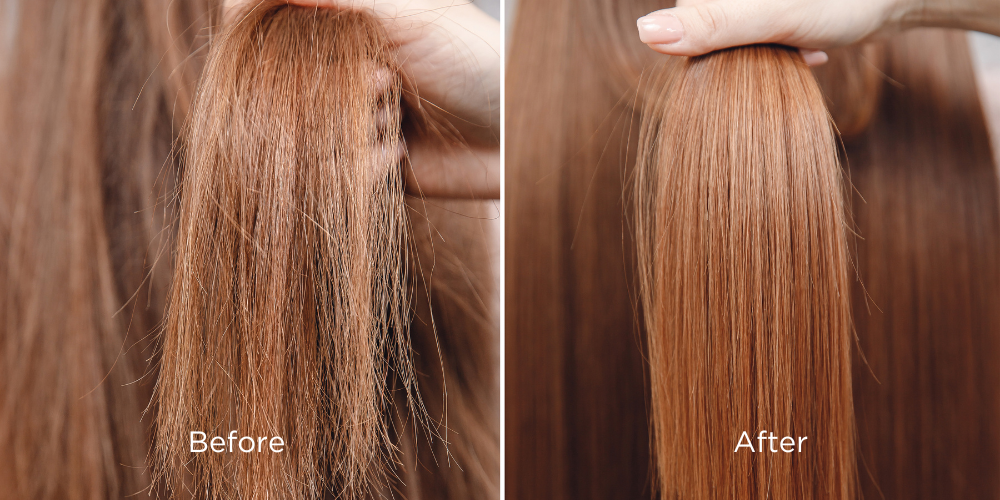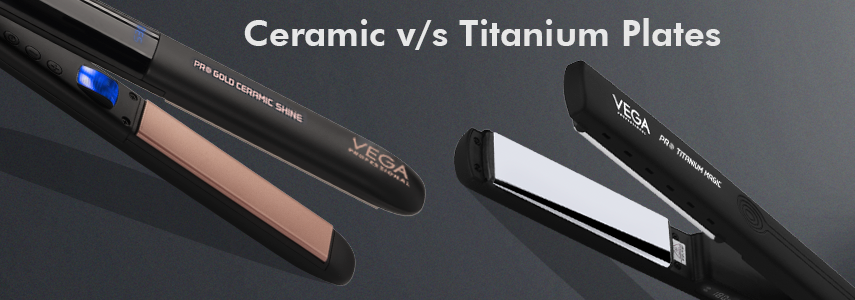Check the material of the plates. Ceramic plates are smooth and uniform, while titanium plates are shiny and metallic.
Choosing the right flat iron is crucial for hair health and styling efficiency. Ceramic and titanium are popular materials used in flat irons, each with unique benefits. Ceramic flat irons distribute heat evenly, reducing the risk of hot spots. They are ideal for fine or damaged hair due to their gentle heating properties.
Titanium flat irons, on the other hand, heat up quickly and maintain consistent temperatures. They are best suited for thick, coarse, or curly hair because of their powerful and efficient heat transfer. Identifying whether your flat iron is ceramic or titanium helps you use the tool effectively and achieve optimal styling results.

Credit: m.youtube.com
Flat Iron Basics
Flat irons help to straighten hair. They give hair a smooth and shiny look. Ceramic flat irons heat up quickly and evenly. They are great for thin to normal hair. Titanium flat irons heat up faster and stay hot longer. They are better for thick and coarse hair. Both types protect hair from damage.
| Material | Benefits |
|---|---|
| Ceramic | Heats evenly, reduces frizz, good for all hair types |
| Titanium | Heats quickly, durable, best for thick hair |
Ceramic Flat Irons
Ceramic flat irons have smooth plates. They heat evenly and prevent hot spots. Ceramic is gentle on hair and reduces damage. The heat distribution is consistent. It helps achieve a sleek look.
These flat irons are great for daily use. They work well on thin or fine hair. The ceramic material locks in moisture. It leaves hair shiny and smooth. Ceramic flat irons are often affordable. They offer good value for the price.
Titanium Flat Irons
Titanium flat irons heat up very fast. They distribute heat evenly. This makes styling faster and smoother. Titanium is very durable. It resists corrosion and lasts long. It is also lightweight, making it easy to handle. Titanium flat irons are great for thick and coarse hair. They provide high, consistent heat. This helps in achieving sleek and shiny hair. Titanium flat irons also have ionic technology. This helps in reducing frizz.
- Heats up quickly
- Even heat distribution
- Durable and resistant to corrosion
- Lightweight and easy to handle
- Ideal for thick and coarse hair
- Reduces frizz with ionic technology
Visual Inspection
Ceramic flat irons often have a smooth and shiny surface. They are usually white or light-colored. Titanium flat irons, on the other hand, often have a metallic and sleek look. They tend to be silver or gray.
Ceramic flat irons are usually lighter than titanium ones. Titanium flat irons feel heavier and sturdier. The build quality of titanium flat irons is often more robust.
Label And Packaging
Check the brand labels on your flat iron. Many brands print the material type on the handle or the plates. Look for words like ceramic or titanium. This can give a clear indication of the material.
The packaging often contains material information. Read the box or manual that came with your flat iron. It usually states whether the product is ceramic or titanium. Sometimes, the material is a combination of both. Be sure to read carefully to understand what you have.
Performance Tests
Place your flat iron on a heat-resistant mat. Turn it on to the highest setting. Use a heat-sensitive paper or thermometer strip. Watch how the heat spreads across the plates. Ceramic flat irons should show even heat. Titanium flat irons may show quicker but more uneven heat spread.
Plug in the flat iron and set it to a high temperature. Use a stopwatch to measure the time it takes to reach the set temperature. Ceramic flat irons usually take longer to heat up. Titanium flat irons heat up very quickly, often within 30 seconds.
Consulting The Manual
Check the flat iron’s manual for specific details. The manufacturer usually lists the material used in the product. Ceramic and titanium are common materials for flat irons. The manual often includes this information in the product description section. Look for words like “ceramic plates” or “titanium plates”.
Read the care instructions in the manual. Ceramic and titanium may have different cleaning guidelines. Ceramic flat irons often need gentle cleaning to avoid damage. Titanium flat irons might be more durable but still require proper care. The manual will provide the best cleaning methods for your flat iron.

Credit: www.fhiheat.com
Professional Advice
Hair stylists can tell if a flat iron is ceramic or titanium. They look at the plates. Ceramic plates are smooth and shiny. Titanium plates are metallic and sleek. Feel the plates for a difference. Ceramic is often softer to touch. Titanium feels cooler and harder. Ceramic flat irons heat evenly. Titanium ones heat up quickly and stay hot.
Experts recommend ceramic for fine and fragile hair. Titanium is best for thick and coarse hair. Ceramic provides gentle heat. Titanium offers powerful heat. Know your hair type. Choose the right flat iron for best results.

Credit: www.vega.co.in
Frequently Asked Questions
How Can I Tell If My Flat Iron Is Titanium Or Ceramic?
Check the flat iron’s label or manual for material details. Titanium irons usually feel smoother and heat up faster. Ceramic irons have a more uniform heat distribution and are often less shiny.
Which Coating Is Better Ceramic Or Titanium?
Ceramic coatings offer superior heat resistance and durability. Titanium coatings provide excellent strength and scratch resistance. Choose based on your specific needs.
Does Titanium Get Hotter Than Ceramic?
Yes, titanium gets hotter than ceramic. Titanium heats up quickly and retains more heat compared to ceramic. Ceramic heats slowly and distributes heat evenly.
Is Titanium Or Ceramic Better For Color Treated Hair?
Ceramic is better for color-treated hair. It distributes heat evenly and reduces damage. Titanium heats quickly but can be harsher.
Conclusion
Identifying if your flat iron is ceramic or titanium is essential for optimal hair care. Remember to check the product label and feel the weight. Ceramic is usually lighter, while titanium is heavier and more durable. Knowing the difference helps you choose the best tool for your hair type.